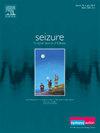颅电成像定位耐药癫痫的致痫区:回顾性研究
IF 2.7
3区 医学
Q2 CLINICAL NEUROLOGY
引用次数: 0
摘要
目的分析电源成像(ESI)在癫痫手术中的临床应用价值。方法回顾性分析我院2000-2021年收治的42例癫痫切除手术患者的临床资料。所有患者均接受长期视频脑电图监测。分析脑电图数据的起搏、节律模式和主频。将icesi (IC-ESI)结果与18-氟脱氧葡萄糖正电子发射断层扫描(18-FDG-PET)、icic单光子发射计算机断层扫描(SPECT)和颅内脑电图(EEG)进行比较,以评估其与Engel分类手术结果的一致性。结果在223例癫痫发作中,IC-ESI的总体定位准确率为48.0% (95% CI: 41.5 ~ 54.5%)。颞深区定位的准确率(64.7%,95% CI: 54.1 ~ 74.0%)和灵敏度(86.4%,95% CI: 75.5 ~ 93.0%)显著高于颞深区外定位(准确率:35.2%,95% CI: 27.4 ~ 43.9%;灵敏度:17.4%,95% CI: 11.0 ~ 26.7%;p & lt;两者均为0.001)。在患者水平上,IC-ESI显示出59.5%的准确性(95% CI: 44.5 - 73.0%)和76.7%的灵敏度(95% CI: 59.1 - 88.2%)。IC-ESI与18-FDG-PET、ictal SPECT的准确度差异无统计学意义(p = 0.15)。在脑电图开始15.5 s内注射染料与SPECT和IC-ESI结果一致(p = 0.03)。IC-ESI的准确性与MRI (p = 0.60)或颅内脑电图(p = 0.18;95% ci: 0.02-1.94)。结论- esi的准确度可与脑电图SPECT和18-FDG-PET相媲美,支持其识别癫痫区,特别是颞叶癫痫的可靠性。尽管在检测心律方面存在挑战,但IC-ESI为手术前评估增加了临床价值。本文章由计算机程序翻译,如有差异,请以英文原文为准。
Ictal electrical source imaging for localizing the epileptogenic zone in drug-resistant epilepsy: A retrospective study
Purpose
This study aims to analyze the clinical utility of electrical source imaging (ESI) of ictal rhythms in epilepsy surgery.
Methods
Medical records of 42 patients who underwent resective epilepsy surgery at Asan Medical Center (2000–2021) were reviewed. All patients underwent long-term video-EEG monitoring. EEG data were analyzed for ictal onset, rhythm patterns, and dominant frequency. Ictal ESI (IC-ESI) findings were compared with 18-fluorodeoxyglucose positron emission tomography (18-FDG-PET), ictal single-photon emission computed tomography (SPECT), and intracranial EEG to assess concordance, with surgical outcomes in Engel classification.
Results
Among 223 analyzed seizures, the overall localization accuracy of IC-ESI was 48.0 % (95 % CI: 41.5–54.5 %). Localization to the deep temporal region showed significantly higher accuracy (64.7 %, 95 % CI: 54.1–74.0 %) and sensitivity (86.4 %, 95 % CI: 75.5–93.0 %) than those outside this region (accuracy: 35.2 %, 95 % CI: 27.4–43.9 %; sensitivity: 17.4 %, 95 % CI: 11.0–26.7 %; p < 0.001 for both). At the patient level, IC-ESI demonstrated a 59.5 % accuracy (95 % CI: 44.5–73.0 %) and 76.7 % sensitivity (95 % CI: 59.1–88.2 %). Accuracy differences between IC-ESI and 18-FDG-PET and ictal SPECT were not significant (p = 0.15). Dye injection within 15.5 s of ictal EEG onset was associated with concordant SPECT and IC-ESI findings (p = 0.03). IC-ESI accuracy was independent of MRI (p = 0.60) or intracranial EEG findings (p = 0.18; 95 % CI: 0.02–1.94).
Conclusion
IC-ESI achieves accuracy comparable to that of ictal SPECT and 18-FDG-PET, supporting its reliability for identifying epileptogenic zones, particularly in temporal lobe epilepsy. Despite challenges in detecting ictal rhythms, IC-ESI adds clinical value to presurgical evaluations.
求助全文
通过发布文献求助,成功后即可免费获取论文全文。
去求助
来源期刊

Seizure-European Journal of Epilepsy
医学-临床神经学
CiteScore
5.60
自引率
6.70%
发文量
231
审稿时长
34 days
期刊介绍:
Seizure - European Journal of Epilepsy is an international journal owned by Epilepsy Action (the largest member led epilepsy organisation in the UK). It provides a forum for papers on all topics related to epilepsy and seizure disorders.
 求助内容:
求助内容: 应助结果提醒方式:
应助结果提醒方式:


